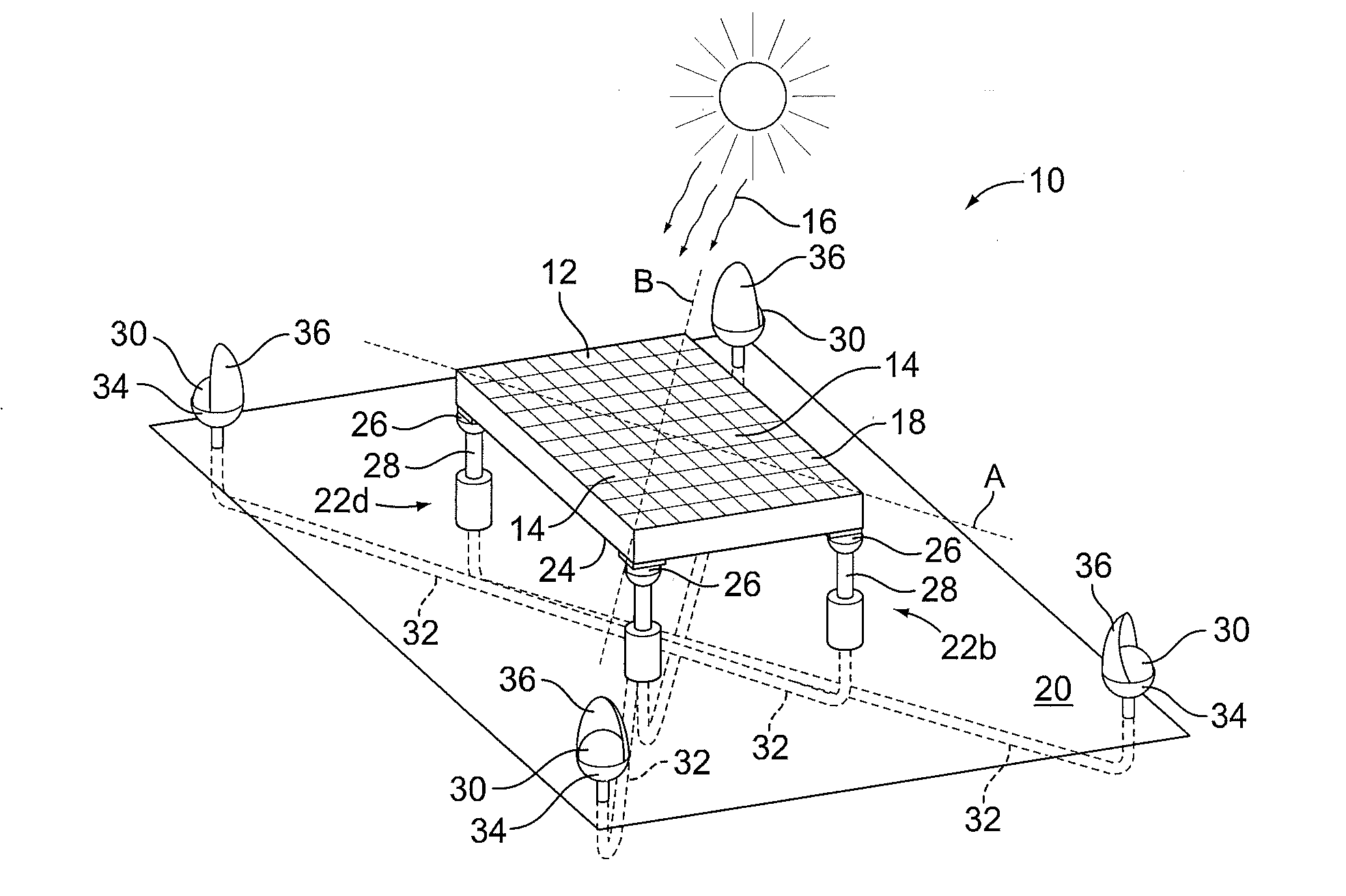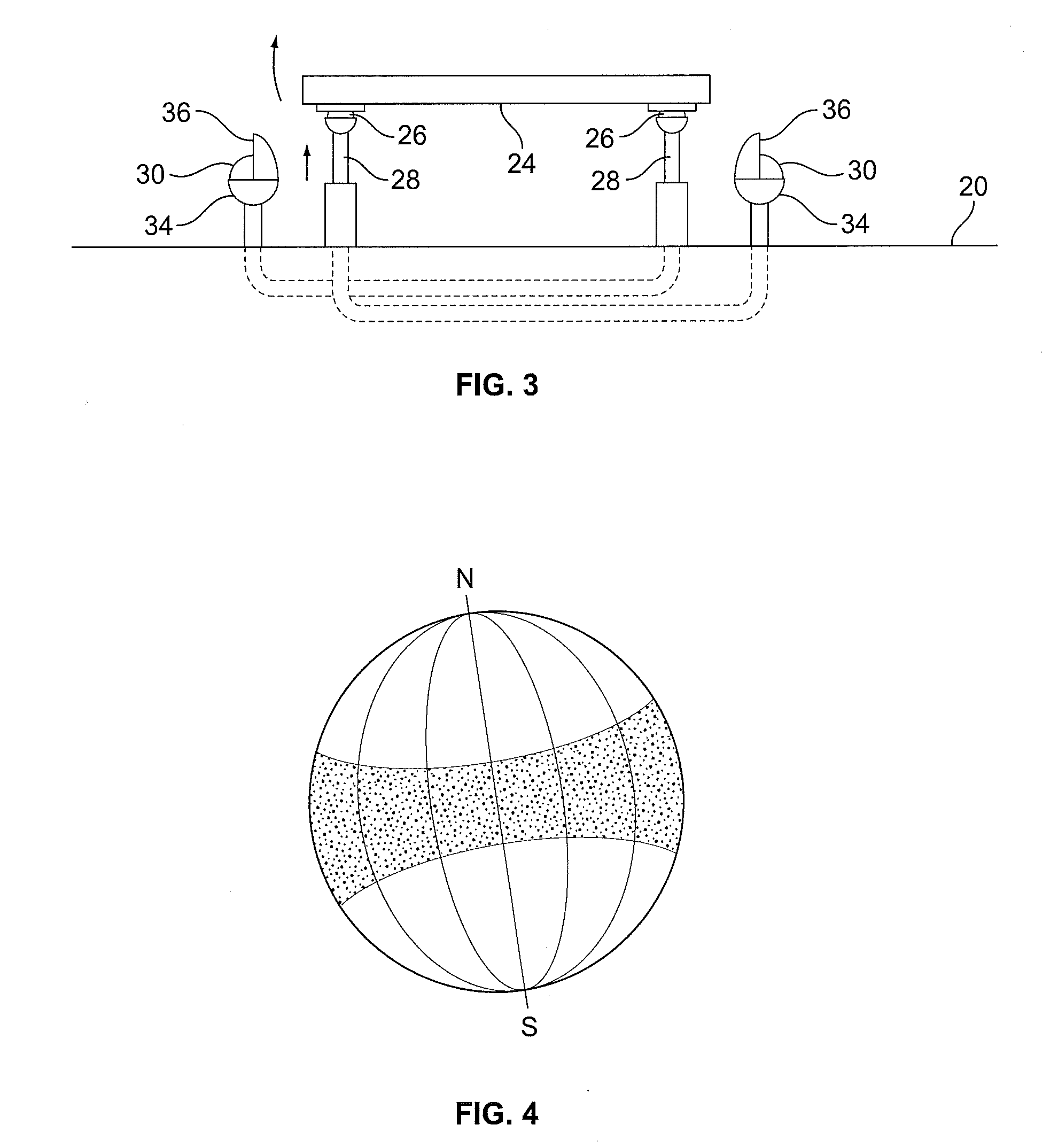Solar panel system and methods of passive tracking
a solar panel and passive tracking technology, applied in the field of solar panels, can solve the problems of not providing bi-directional tracking of solar panels or groups of solar panels, prone to wind damage, and certain disadvantages of conventional solar tracking systems
- Summary
- Abstract
- Description
- Claims
- Application Information
AI Technical Summary
Benefits of technology
Problems solved by technology
Method used
Image
Examples
Embodiment Construction
[0023]Solar energy processes the sun's light or solar illumination to transform the solar illumination into electrical energy. Generally, a solar panel is formed by interconnecting a number of photovoltaic or solar cells. Solar illumination has photons that are absorbed by the solar cell to energize the cell. The energized solar cells then provide electricity, which may be used for residential or commercial use. Alternatively, the electricity may be stored until needed.
[0024]The performance of a solar panel is dependent on a number of factors, but especially on the angle of incidence between the solar illumination and the normal to a front face of the solar panel that receives solar illumination. Other external factors that affect the performance of a solar panel include of amount of rays received from the sun due to interference from clouds, fog, and rain. However, while weather may affect how often solar energy can be collected using a solar panel, many geographical areas have tem...
PUM
 Login to View More
Login to View More Abstract
Description
Claims
Application Information
 Login to View More
Login to View More - R&D
- Intellectual Property
- Life Sciences
- Materials
- Tech Scout
- Unparalleled Data Quality
- Higher Quality Content
- 60% Fewer Hallucinations
Browse by: Latest US Patents, China's latest patents, Technical Efficacy Thesaurus, Application Domain, Technology Topic, Popular Technical Reports.
© 2025 PatSnap. All rights reserved.Legal|Privacy policy|Modern Slavery Act Transparency Statement|Sitemap|About US| Contact US: help@patsnap.com



